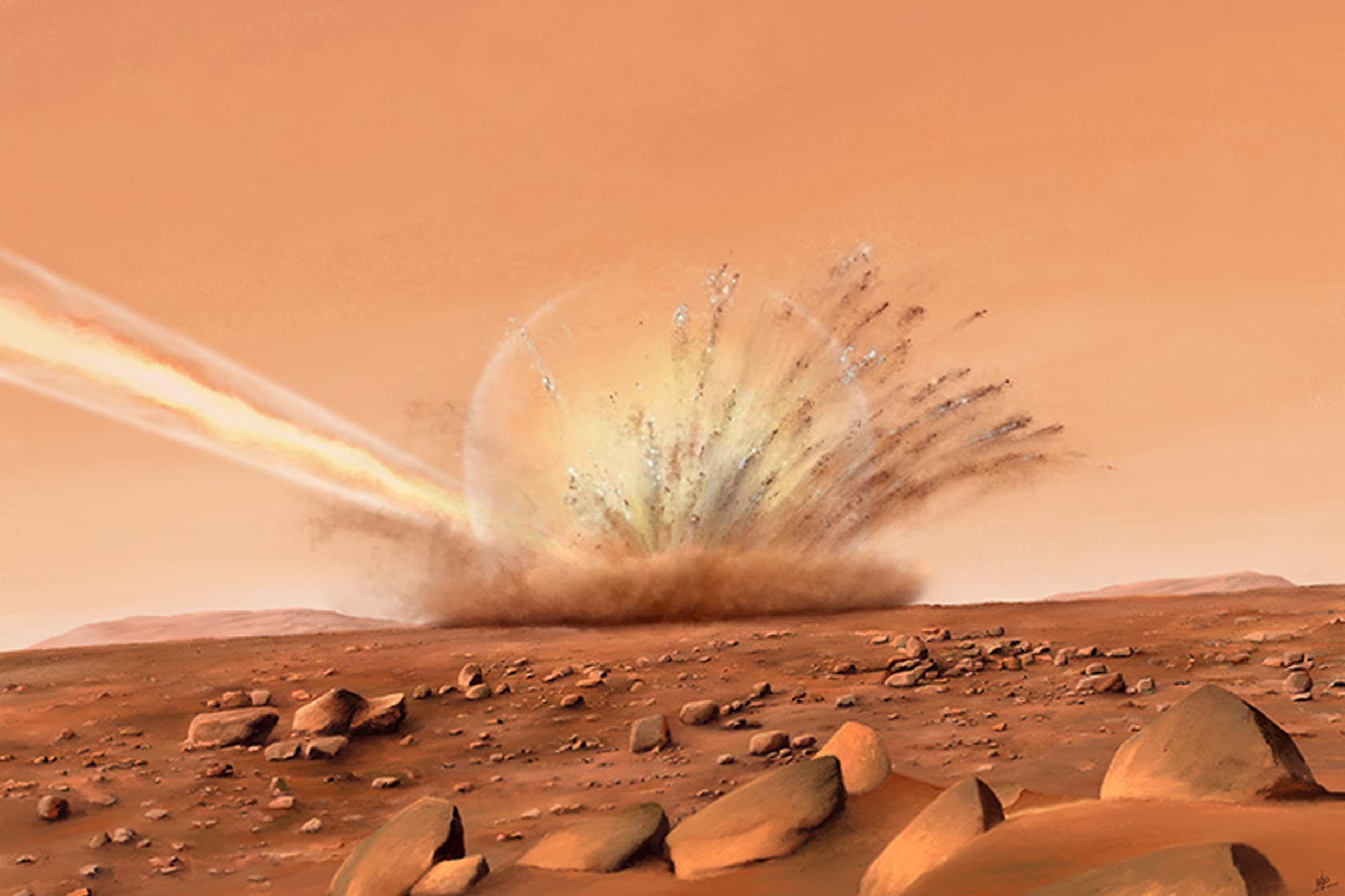Recent meteorite crashes on Mars ‘could reveal clues about planet’s origin’
Vibrations caused by the impacts are giving scientists new insight into the structure of the red planet.

Your support helps us to tell the story
From reproductive rights to climate change to Big Tech, The Independent is on the ground when the story is developing. Whether it's investigating the financials of Elon Musk's pro-Trump PAC or producing our latest documentary, 'The A Word', which shines a light on the American women fighting for reproductive rights, we know how important it is to parse out the facts from the messaging.
At such a critical moment in US history, we need reporters on the ground. Your donation allows us to keep sending journalists to speak to both sides of the story.
The Independent is trusted by Americans across the entire political spectrum. And unlike many other quality news outlets, we choose not to lock Americans out of our reporting and analysis with paywalls. We believe quality journalism should be available to everyone, paid for by those who can afford it.
Your support makes all the difference.Scientists are analysing the data from two large meteorite impacts on Mars, with aim of understanding more about how the red planet formed.
The space rocks crashed into the Martian surface at different times in the latter half of 2021, resulting in two large craters upwards of 130 metres in diameter.
Nasa’s InSight lander – which touched down on Mars in 2018 – recorded the vibrations caused by both impacts.
These vibrations, or seismic surface waves, gave scientists an insight into the structure of the Martian crust, which may hold important clues about the origin and evolution of the planet.
This is the first-time seismic surface waves have been observed on a planet other than Earth
Doyeon Kim, a geophysicist and senior research scientist at ETH Zurich’s Institute of Geophysics, said: “This is the first time seismic surface waves have been observed on a planet other than Earth.
“Not even the Apollo missions to the Moon managed it.”
The researchers used data from the Insight lander to determine the structure of the crust at depths of between roughly five and 30 kilometres below the surface of Mars.
They found that the crust was denser than previously thought.
The team said its new findings are “remarkable” because a planet’s crust provides important clues about how that planet formed and evolved billions of years ago.
The scientists said their work could also help solve a centuries-old mystery: The Mars dichotomy.
The Mars dichotomy is described as a sharp contrast between the volcanic lowlands of the northern hemisphere and a plateau covered by meteorite craters in the southern hemisphere.
Domenico Giardini, ETH Zurich Professor of Seismology and Geodynamics, said: “As things stand, we don’t yet have a generally accepted explanation for the dichotomy because we’ve never been able to see the planet’s deep structure.
“But now we’re beginning to uncover this.”
The researchers said that their initial analysis suggests that both hemispheres may be structurally similar at lower depths, despite appearing different on surface.
They believe that contrary to previous research, the north and the south are not likely to be composed of different materials.
The findings are reported in two separate papers in the journal Science.
Meanwhile, another team of international researchers analysed data from Insight’s seismometer, which has recorded more than 1,300 marsquakes.
Based on their findings, published in the journal Nature Astronomy, the experts believe volcanic activity is still present on the planet, in shaping the Martian surface with magma – hot molten and semi-molten liquid – flowing beneath.